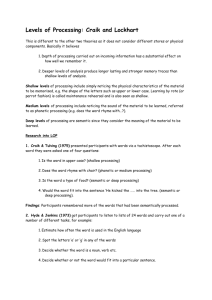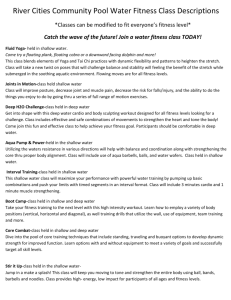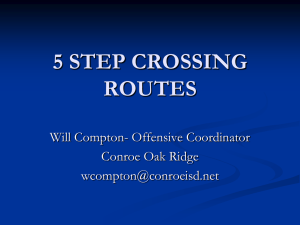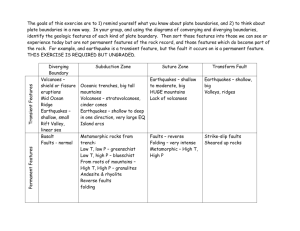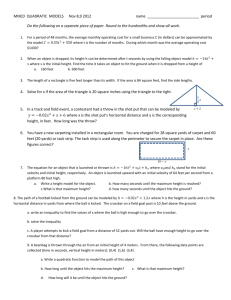Valdosta State`s Shallow Passing Game
advertisement
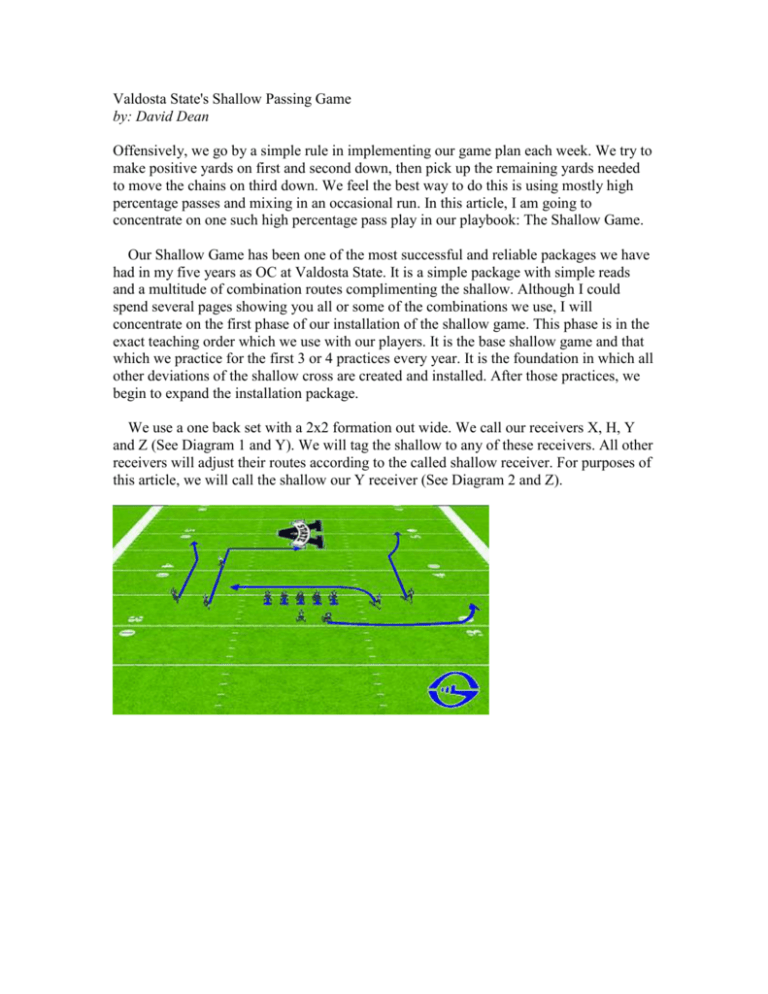
Valdosta State's Shallow Passing Game by: David Dean Offensively, we go by a simple rule in implementing our game plan each week. We try to make positive yards on first and second down, then pick up the remaining yards needed to move the chains on third down. We feel the best way to do this is using mostly high percentage passes and mixing in an occasional run. In this article, I am going to concentrate on one such high percentage pass play in our playbook: The Shallow Game. Our Shallow Game has been one of the most successful and reliable packages we have had in my five years as OC at Valdosta State. It is a simple package with simple reads and a multitude of combination routes complimenting the shallow. Although I could spend several pages showing you all or some of the combinations we use, I will concentrate on the first phase of our installation of the shallow game. This phase is in the exact teaching order which we use with our players. It is the base shallow game and that which we practice for the first 3 or 4 practices every year. It is the foundation in which all other deviations of the shallow cross are created and installed. After those practices, we begin to expand the installation package. We use a one back set with a 2x2 formation out wide. We call our receivers X, H, Y and Z (See Diagram 1 and Y). We will tag the shallow to any of these receivers. All other receivers will adjust their routes according to the called shallow receiver. For purposes of this article, we will call the shallow our Y receiver (See Diagram 2 and Z). Our X and Z are our vertical pushers. They are the first read for the quarterback. If he sees or feels any press coverage with no safety help, he may take the vertical deep route. This is not a high percentage throw, so he must be sure he can complete the pass. If he has any doubt whether it is press coverage or the success of the pass, he will come off of the vertical very soon after the ball is snapped. As stated, our Y receiver is the shallow crosser. His aiming point is the heels of the defensive linemen as they are aligned pre-snap. He comes across the ball, replacing their heels, usually at a depth of 1 to 1.5 yards. He will not slow down until he reaches the backside numbers of the playing field. Once he catches the ball, he will try to outrun all defenders to the sideline. This goes against every teaching rule you may have taught your receivers and running backs. We constantly tell our ball carriers to head straight up the field once they catch the ball. On this particular catch, this is the exception. We teach them to gradually get yardage up the field while trying to outrun defenders to the sideline. The reason behind this is simple: the shallow route is usually caught in front of a dropping or chasing linebacker. If we catch the shallow, we will turn into the LB, thus playing into the defenders hands (See Diagram 3). We feel we can outrun the LBs. thus getting, on the average, 8-9 extra yards than we would if we turned straight up the field (See Diagram 4). The shallow catcher on the other hand cannot lose any yardage trying to outrun a defender. If a defender shows in his face, he will immediately turn upfield and get as many yards as possible (See Diagram 5). Our H will run a 10 yard ‘in’ cut. His responsibility is to attack the outside shoulder of the Flat Defender (FD) aligned to his side. He is trying to push him vertical or occupy him as long as possible. If he is successful, we can complete the shallow cross to the Y. If the flat defender anchors and tries to collision him, he will release inside, trying to avoid as much contact as possible, and get back vertical to 10 yards to his square in (See Diagram 6). We want the H to outside release the FD if possible. He should inside release the FD only at a depth of 8-10 yards. If the FD collisions the H at the line of scrimmage, he must release outside. Our quarterbacks read areas of the field as opposed to defenders. If the QB does not take the vertical throw as previously mentioned, he will find the grass area to where the shallow cross receiver is headed. If no defender is in that grass area, he will look to throw to the shallow cross (See Diagram 7). If anyone is occupying that grass area, he will come off the shallow cross and look to throw the ‘in’ cut. He will hit the ‘in’ cut depending upon where the MLB has cropped. If the MLB is chasing the shallow cross or zone drops to the break point of the H, he will wait for the H to clear the MLB and then throw the ball to H (See Diagram 8). If the MLB has zone dropped to the middle of the field, he will hit the H at his break at 10 yards (See Diagram 9). This is why it is important for the H to get back vertical to 10 yards if he faces a bump by the FD. If he does not get back vertical, he is pushed too close to the MLB and it becomes a very difficult throw for the QB. If the SLB comes into view of the QB before he throws the ‘in’ cut to H, he will continue progression and throw the ball to his check down route which is the back on a swing to the called shallow receiver side (See Diagram 10). As you can see, the progression of the QB will be Y to H to RB if the vertical route was not taken at the snap. This takes the eyes of the QB from left to middle to right, forcing the defense to defend the entire field. As stated earlier, there are a multitude of combinations you may use in your shallow game. One of our favorites is to tag a curl route to the X or Z receiver. This does not affect any other receiver’s route. We now have only one vertical possibility instead of the base two with this tag. In total, we have over 35 different tags and combinations in our shallow game. We do not carry all of the tags and combinations into every game, choosing instead to use the best tags and combinations for the defense and personnel we face from game to game. All of the combinations carry the vertical threat and the high percentage throws. Rather than spending pages talking about all of the tags and combinations, I wanted to show you a basic overview of the play and from there you can expand to best fit your system. This play has produced our highest number of yards after the catch each year. Over 90% of the throws made in this play are made no deeper than 12 yards. We take the high percentage throw and hope to out run defenders, have a defender take a bad angle or break a tackle. I always relate what we do offensively to playing golf. If you have 18 three or four foot par putts in a round, the chances of you doing well are much higher than they would be if you had 30-40 foot putts in a round. In the clubhouse everyone remembers the 40 foot double breaking putt you snaked in, just like the 80 yard bombs are the one’s that make the hilite shows. But the guy that had the most three or four foot putts for par is the one collecting on bets in the clubhouse at the end of the round. Likewise, the guy that completes the most number of high percentage passes and keeps the chains moving and his defense off the field is the one winning the championships. We feel the shallow game gives us the opportunity to consistently move the ball with high percentage passes and the ability to keep the chains moving. Consequently, it gives us the best chance to win ball games. I hope this may help you with your offense. We don’t want to say this is the correct way to throw the shallows or the only way to install, read and run the play. It has been successful for us and has been one of three or four plays we can “hang our hat on” consistently every game.
